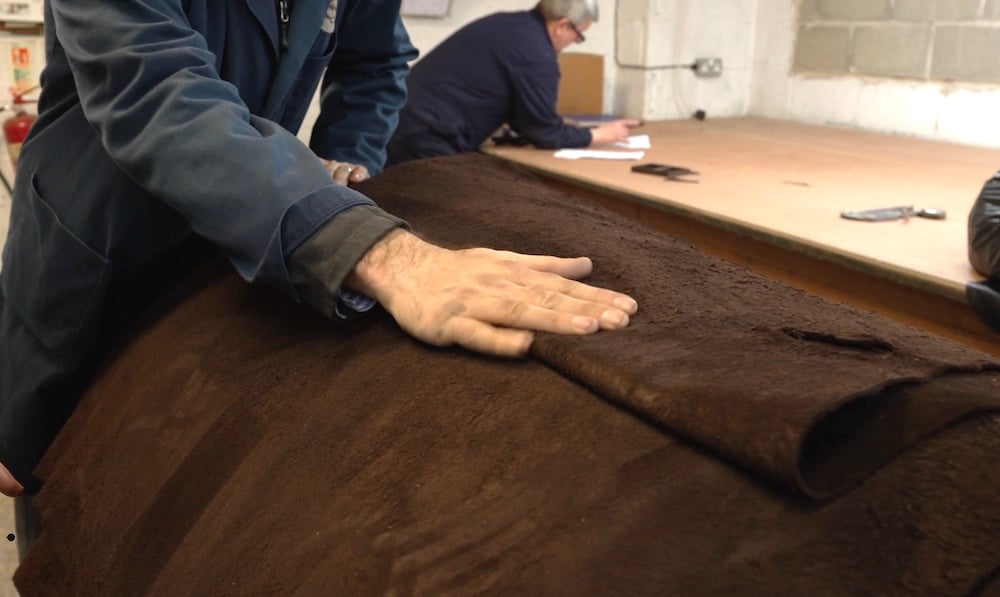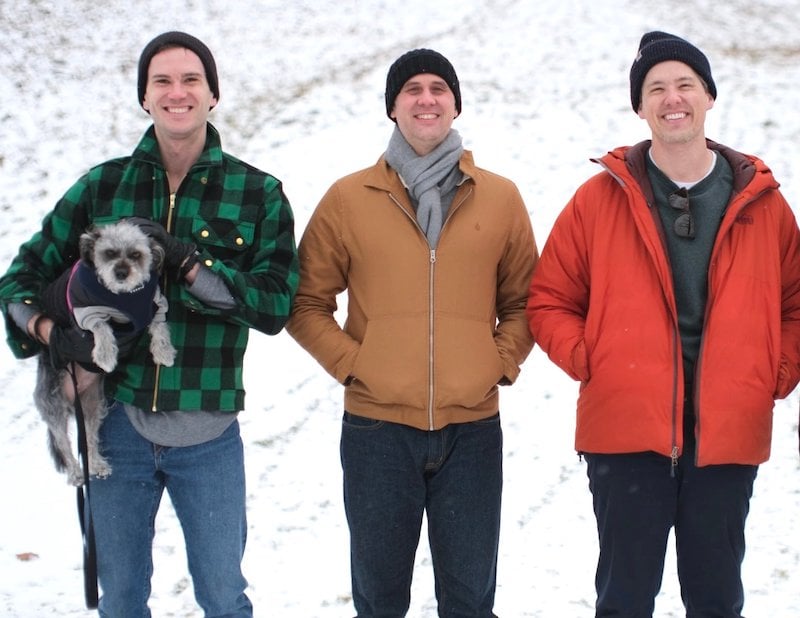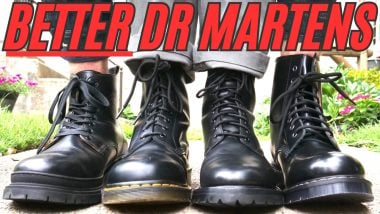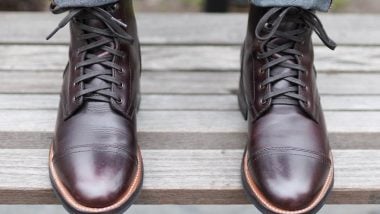How to Wax Suede | A Step-By-Step Guide Boots, Shoes, or Jackets

Expert Verified By: Trenton Potter, Cobbler & Footwear Expert
If you’ve ever owned a pair of suede boots, you’ll probably agree it picks up stains and can look pretty beat up after a while. Fortunately, adding a coat of wax is a cool way to increase the lifespan, durability, and water resistance of your favorite suede boots and shoes.
I met with professional cobbler Trenton Potter to learn how to wax suede and give my boots a second life.
[Related: The 10 Best Desert Boots for Men]
What You Will Learn
Today, we’ll give you the lowdown on waxing suede shoes and boots with products like Otter Wax and discuss the added benefits of a more heavy-duty, beeswax-based product like Sno Seal. By the end, you will be able to breathe new life into any waxed shoes or boots and keep them that way.
[Related: Leather vs Suede vs Nubuck | Which Is For You?]
The Best Products for Waxing Suede
- Otter Wax: A classic, synonymous with wax, and because it’s in the form of a bar, it’s easier to apply than the other products on this list.
- Sno Seal: A beeswax-based formula that’s heavier and darker.
- Armstrong’s All Natural is our favorite small independent leather care company. Its product is high-quality and simple to use.
- Martexin Wax: A product from one of America’s most beloved canvas manufacturers, Fairfield Textiles.

How to Wax Suede with Otter Wax
Applying Otter Wax or a similar cream polish product or wax bar is straightforward. Our guide has tweaked the process a little and added a few optional steps. You can skip these depending on which type of finish you wish to obtain.
We timed the entire process, and it took around 30 minutes. Generally, we used about three-quarters of a regular-sized wax bar.
For our tests, we used suede with a medium-sized nap. Whatever the length of the fibers you’re working with, the waxed suede product applied (Otter Wax, in this instance) lays down the leather fibers.
Though we used boots for our experiments, the same holds were used for suede shoes.

Does Waxing Suede Change the Color & Texture?
You should also be aware that once waxed, boots or shoes will become considerably darker in color and lose their fuzziness. It’s best to know this before you start so you won’t be in for surprises.
Without any further delay, here is our step-by-step guide to transforming any pair of suede shoes or boots.

Step 1
Remove the laces.
Pro tip: This is a good opportunity to inspect the pair of laces for signs of damage and replace them if they appear frayed. If the laces are okay, a quick wash might be in order.
Step 2
Stuff each boot with crumpled-up newspaper or waste paper to support the shoe or boot. Paper is best, as a shoe tree doesn’t support the top half of a boot.

Step 3
Make sure the suede is clean and free of dirt, dust, or any debris picked up by wearing them. A suede brush like Shacke’s or similar is gentle on the leather and does a good job. However, if there is heavy soiling or stains, you may have to use saddle soap before brushing.
Step 4
Start rubbing in the wax when you are sure the boots or shoes are as clean as possible. Use gentle pressure while moving the bar to and fro to create friction. This action will soften the wax and help make it easier to spread.

Step 5
It is best to be methodical and apply the wax to one boot area at a time. Once you have applied the wax to a reasonably large area, begin to smooth out the wax with your fingers to ensure an even coating.
Pro tip: Use the bar’s edge to ensure you don’t miss anywhere in awkward, difficult-to-reach areas.

Step 6
Check that you have thoroughly coated all the seams. This is important for making leather boots or shoes water-resistant.

Step 7
If you have one, a heat gun applied to the end of the bar will help spread the wax more quickly. But don’t overdo it with the heat — when the wax becomes shiny, that’s your cue to apply the melting wax directly onto the suede.
Pro tip: Always ensure that the heat gun is on its lowest heat setting. Take care when using a heat gun to avoid burning the leather or yourself.
Step 8
If you prefer a more matte-looking finish to the material, stop at this stage and go directly to Step 10.
Step 9
If you want the suede to look shinier, add an extra layer of wax. This time, apply the additional wax directly to the leather without using heat.

Step 10
The next step is to use a dull wooden tool to smooth out any stubborn spots of excess wax and even out any areas that appear uneven. Clean the tool on a cloth as you go along.
Pro tip: You can buy a special wax smoothing tool for the job. Otter Wax sells them on its website for less than $5. It’s made from birch and has a two-inch-wide surface for smoothing out and removing any excess. You can also use the tool on other waxed fabrics like bags to eliminate creases by heating the surface first with a hairdryer.

What is Suede?
During processing, the tannery cuts hides into three segments called ‘splits’ or the top grain, the interior, and the underside. The tannery uses the top grain and the interior for soft and shiny leather.
They use the underside split to make suede. Note that sometimes suede is just from leather that was split in two — in either case, suede is thinner than regular leather. (This is the big differentiator between suede and roughout, which is simply full-grain leather that has been flipped inside out.)
This underside layer is ideal for making suede as it is much more flexible than the other splits. This flexibility is what makes natural suede so comfy.

The History of Waterproofing Suede
Given its shortcomings—it’s thinner than full-grain leather and stains more easily—why do we even use suede to clad our feet?
People have used suede to cover their feet for at least 5,500 years, possibly longer. The splitting makes it thinner but more flexible, making it a valued fabric for ancient peoples worldwide.
So there’s a very long history between humankind and dirty fuzz.
Whether dashing through a rain shower to the office or herding cattle millennia ago, suede is prone to stains. According to records, people first used a preservative coating made from a combination of salt and clay.
By 2200 BC, they had replaced the salt and clay with early tanning techniques that used alum salt. This new tanning process marked a major advancement in preventing hide deterioration.
The first attempt to treat leather with cedar oil occurred in central Europe around 1000 BC. Our ancestors had figured out that natural oils would soften the leather and give it some much-needed water repellency.

In the 21st century, we are still doing much the same, though more often with modern petroleum — or silicone-based treatments. Both of these methods use synthetic products; lately, many customers have shown interest in returning to more “natural” solutions.
Enter waxed suede.
A Few Final Thoughts
If you truly want to appreciate the difference, take before and after pictures. You may be surprised.
Over time, waxed suede develops a lovely patina on the toe, heel, and other pressure points. This gives your footwear extra character and a little more shine on the front and sides.
It’s up to you how often re-waxing is required.
[Related: How To Clean Suede Boots]
Frequently Asked Questions
What type of polish should I spray on suede?
Avoid leather polish — it's too harsh for use on suede. To get your suede looking like you have spent time with polish, use a specialized wax-based polish that's designed for suede instead.
How do you make suede look shiny?
When suede is shiny, you're looking at waxed suede. Adding a layer of wax increases shine and makes it more stain and water resistant as well. Grab a product like a bar of Otter Wax and rub it all over clean suede, smoothing it out with your fingers.
What kind of brush should I use on a suede shoe?
Both crepe and brass bristle brushes are used on suede, depending on how dirty it is. Your best bet is to pick up Shacke's 4-way leather brush cleaner, which has both soft rubber and hard, brass-like bristles for any kind of suede.
What will make suede repel water?
Suede is not naturally waterproof, but you can dramatically increase the water and stain resistance by applying a layer of wax, like Otter Wax, or a silicone spray like Kiwi's Boot Waterproofer.
What is the nap on leather?
This refers to the fuzzy appearance of the little 'hairs' — which are actually flesh — that protrude from suede.









Would this same process be used for roughout leather? Specifically roughout natural chromexcel? Im also curious on what it would do to the color. I don’t plan to wax my natural chromexcel roughout boots anytime soon, but I’m interested in the idea to make them a bit tougher.
Yes, Ryan, this works for roughout. They’ll darken a bit but they’ll pick up a nice undulation of color.